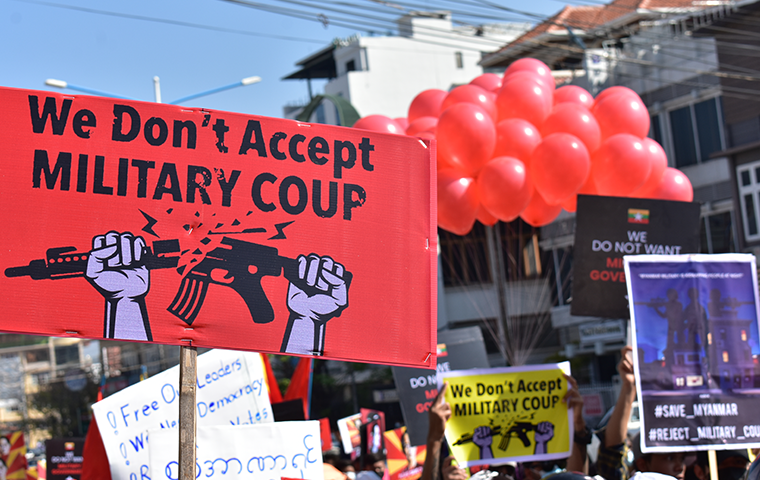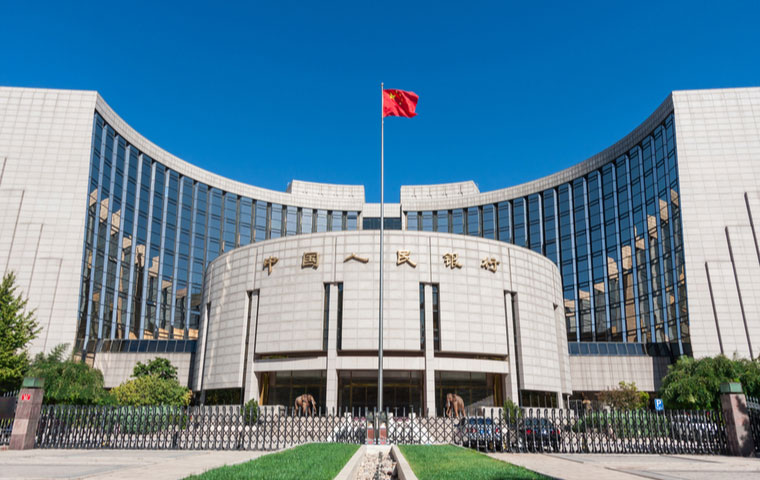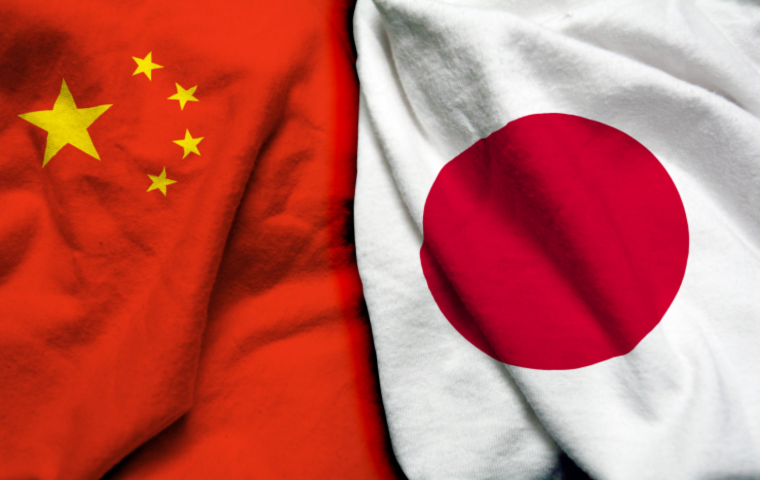The Deadlock in Myanmar—When Will It End?
Related Articles

On February 1, 2023, the second anniversary of the coup, the State Administration Council (SAC), the top decision-making body of Myanmar’s military regime, announced extending the state of emergency. Thus, the general election, which was supposed to be held by August 2023, is likely to be postponed. Then in March, the military junta dissolved the National League for Democracy (NLD), headed by Aung San Suu Kyi (still in detention), as it failed to meet the party registration deadline. In April, the junta conducted a deadly airstrike on a village in the Sagaing region, killing about 170 people including civilians.
These incidents, reported from time to time, are all a far cry from the image of Myanmar, dubbed “the last frontier of Asia” during the 2010s. The country and its global environment changed drastically with the coup, and it is still in turmoil. There still seems to be no way out of the political confrontation. However, the situation at home and abroad is gradually changing.
The Meaning of Extended State of Emergency
The official decision to extend the state of emergency was made at the National Defence and Security Council (NDSC), comprising key members of the regime and military. Section 425 of the Constitution, the basis of this extension, states, “The National Defence and Security Council may, if the Commander-in-Chief of the Defence Services submits the extension of the prescribed duration by giving reasons why he has not been able to accomplish the assigned duties, on the expiry of the term of the Pyidaungsu Hluttaw [Assembly of the Union], normally permit two extensions of the prescribed duration for a term of six months for each extension.” Previously, it had been thought that the state of emergency could be extended for a maximum of one year, with two six-month periods.
In fact, about six months from the coup, the junta began saying a general election will be held by August 2023, because it assumed two years of a state of emergency followed by six months of NDSC rule, under which a general election and transfer of power (Section 429 of the Constitution) will be carried out. So, simply put, the extension was due to the military’s failure to control the situation as planned.
However, the military will never admit the current situation was unexpected, since it is fixated on organizational infallibility. Regarding section 425 of the Constitution, it went ahead with the interpretation that extensions are not limited to twice if the situation is not “normal.” And it decided on an extension of six months, saying the current situation cannot be deemed “normal.”
To justify that the situation was an “emergency,” the military’s Commander-in-Chief General Min Aung Hlaing mentioned the security situation in a speech addressed to the people, saying, of the 330 sub-districts (townships) across the country, 65 lack adequate order. According to the junta, “terrorism” caused security deterioration. The “terrorists” that carry out “terrorism” are organizations that we call the democratic camp, pro-democracy forces, and resistance forces in Japan. Specifically, they are the Committee Representing Pyihtaungsu Hluttaw (CRPH), National Unity Government (NUG), and People’s Defense Forces (PDF). The ethnic minority armed groups such as the Kachin Independence Army (KIA) and the Karen National Union (KNU) that fight alongside these organizations are also denounced by the junta, but are distinguished carefully from “terrorists.”
Of course, calling these organizations terrorists merely reflects the junta’s self-centered perception of threat. Yet, it is true public order continues to decline. As the graph below shows, the number of armed conflicts in Myanmar has decreased little since 2022. Over 200 conflicts continuously occur each month. Although the scale of each conflict is small, we can say the confrontation between the two forces has reached a stalemate.

Yangon, Naypyidaw, and other urban areas and the highly populated Ayeyarwady Delta region are relatively stable. But the northern part of the central plain region called Upper Myanmar, and the ethnic minority regions still have poor public order. Sagaing and Magway regions had long been free of conflicts, but now, there are areas ungovernable by the military.
Although the governing structure is under junta’s control, it cannot hold a political event that needs setting up over 40,000 polling stations across the country. If they push forward with the general election, it could have sparked a new chaos by backlash from resistance forces. Already, besides the military’s crackdown, there have been a series of attacks on the military, police, and government officials by radical groups within the resistance forces.
Will Junta Rule Be Sustained?
Had the military leadership envisioned continuing the junta regime from the start? Such speculation is possible. Yet I doubt that, because the military was working to install a pro-military government.
Myanmar’s election commission, appointed by the junta, had already announced the 2020 general election results are invalid. Senior government officials and ruling party officials in detention have been indicted and convicted on charges of election fraud and corruption. For example, Aung San Suu Kyi has been sentenced to a total of 33 years in prison on 19 charges (some sentences not yet finalized). The general has sent his aide to the pro-military Union Solidarity and Development Party (USDP). As mentioned at the beginning of this article, the NLD’s party registration was canceled in late March 2023. Preparations were underway for a general election with visible results. This seemed like Gen. Min Aung Hlaing was paving the way to his presidency, since he had been eyeing the position even before the 2020 general election.
Therefore, extending the state of emergency was at least contrary to his best-case scenario. We could say the resistance of some citizens who did not give in to the repression paid off. In fact, after two years from the coup, the military is exhausted, with some estimating over 10,000 soldiers were killed in combat.
Yet, the situation is also tough for the resistance forces. Despite public support, they fall behind the junta in military strength, equipment, and funds. Originating from opposition to the military’s seizure of power, the resistance has since expanded and developed into armed conflicts. It is not based on fair chances of victory. The NUG, a parallel government, some ethnic minority armed groups that joined on board, and young people discontent with the junta—these forces formed a loose united front and led the battle against the military to a war of attrition, expecting more military defectors and diplomatic pressure on the junta. In fact, the resistance succeeded in creating areas inaccessible to army units. Though whether this can be called effective control remains a matter of dispute, it is at least a “no-go zone.” The junta’s governing power is also falling in ethnic minority states.
However, military defectors have dropped from the previous year, and a split is unlikely. Diplomatic pressure is still far short of expectations. The current deadlock will not change in the short term. On April 11, 2023, the military airstrike in Pazigyi Village, Sagaing, killed about 170 people attending a NUG ceremony. This incident shows that the military continues to suppress resistance through forceful measures, like airstrikes and destruction of the villages. With many civilians involved, criticism is growing at home and abroad, but the junta will not and cannot change their way. So, they are likely to repeat the extension of the state of emergency in the future. The retirement age for the commander-in-chief has already been scrapped. His own miscalculations prevent Gen. Min Aung Hlaing from fulfilling his ambition to be the president, so he is likely to hold more power for some time to come.
Approaching Myanmar: Hardline or Pragmatic?
From the start, the international approach to the crisis in Myanmar had been out of array. To put broadly, the initial picture was like this: the Western nations pressuring the military through targeted sanctions, the engagement diplomacy by the Association of Southeast Asian Nations (ASEAN) seeking breakthrough by dialogue with the military and affiliate forces, and Moscow and Beijing confirming the status quo while criticizing the West’s pressure as interference in internal affairs. The basic picture remains the same, with some changes, like the following two.
First, ASEAN’s engagement diplomacy reached an impasse, and the neighboring countries are actively taking a more pragmatic approach. The junta has not proceeded with the “Five-Point Consensus” agreed at the April 2021 ASEAN Leaders Meeting, including Gen. Min Aung Hlaing. In November 2022, ASEAN banned Myanmar representatives (undersecretaries are allowed) from attending the summit and foreign minister’s meeting. Meanwhile, Thailand shares a 2,416-km border with Myanmar, and relies on the country for 14 percent of its natural gas imports. Thailand also has 3 million or so Burmese working in the country. So, its potential negative impact from instability in Myanmar is far greater than in other countries.
So, in December 2022, Thailand held an informal meeting with concerned parties in Bangkok. SAC’s Foreign Minister, and officials from Cambodia, Indonesia, Laos, Vietnam, Bangladesh, China, and Japan attended, while the relatively hard-lined Singapore, Malaysia, and the Philippines declined to join. In April 2023, India, also Myanmar’s neighbor, held a follow-up meeting in New Delhi. Ostensibly, it was a “Track 1.5” dialogue, but we could take it to be a new move by the governments of the involved countries. It is still too early to make any assumptions, but we need to take note that moves for engagements in a different form from ASEAN are emerging.
As for ASEAN, the chair-country Indonesia was willing to play an active role in improving Myanmar’s situation. However, the ASEAN chair’s top priority is to pave the way for East Timor’s accession, and the response to the Myanmar crisis will be secondary. According to Indonesian Foreign Minister Retno Marsudi, Indonesia is negotiating with involved parties behind the scenes, but time is very limited. If the state of emergency will be extended again, it will be in August. With an extension under the current situation, approaching the junta will be even tougher.
China Approaching the Junta

Another change is the closer junta-Beijing relationship. Compared to Moscow, which immediately sided with the junta after the coup, Beijing was more cautious in its response. For example, senior-level government visits have been limited to the special envoy for Asian Affairs. Although Beijing had indirectly supported the junta by providing COVID-19 vaccines, it had not approved the situation of continuous conflicts. That has changed from 2023. In May, Chinese State councilor and foreign minister Qin Gang visited Naypyidaw as the first government official to go to the capital since the coup and held talks with Gen. Min Aung Hlaing. According to the junta’s announcement, Quin stressed that he hoped for stability in Myanmar from the bottom of his heart. Quin also met with former junta leader Than Shwe and former president Thein Sein.
Obviously, there is no way Beijing will support radical democratic forces. It clearly leans toward the junta. Yet, this should be considered a rational decision based on national interests rather than ideology. For example, there are natural gas and oil pipelines running across Myanmar. Since natural gas exports are the junta’s important source of revenue, they are always subject to sabotage by pro-democracy forces. In addition, the deep-sea port and special economic zone at Kyaukphyu, Rakhine State and the planned railroad and road project leading to Yunnan Province are vast infrastructure projects that will not proceed without political stability. There are also concerns that having armed forces in the border region will directly affect border trade and security in Yunnan. Recently, an online casino base targeting Chinese customers has been set up on Myanmar’s side, fueling concern of negative influence on Chinese society that extends beyond the border region.
Considering these interests, the radical goals set forth by the NUG would merely seem unrealistic and potentially risky demands for Beijing. However, the situation will not be resolved by backing just the junta (or the resistance, of course) under current conditions. The extension of the state of emergency has made this clear once again. While assuming that governance by the junta is a more realistic path to stability, Beijing seems to be eyeing to attract democratic forces to a certain degree for the sake of Myanmar’s stability and China’s interests. In its aim to improve the situation, Beijing will probably engage with the junta and improve junta-ethnic minority armed group relations first.
Uncertain Governance Will Continue
With diplomatic pressure and engagement failing to function fully, the junta’s behavior remains unchanged, and governance in Myanmar is declining, especially in rural areas.
According to the UN Office for the Coordination of Humanitarian Affairs, the number of internally displaced persons has exceeded 1.8 million. The Asian Development Bank’s economic growth forecast for FY2023 is only 2.8 percent, and companies concerned about the impact of reputational risk on investors and clients continue to downsize or withdraw from business in Myanmar. Foreign exchange shortage is also notable, and some point that repayment of dollar-denominated foreign debt may fall behind in the near future. Despite these circumstances, the SAC increased Myanmar’s defense budget by 150 percent from the previous year in FY2023. The drastic expansion of military spending amid declining government revenues will further accelerate the decline of government functions.
There is no quick-fix diplomatic tool for Myanmar’s situation. The country is obviously caught in a vicious cycle, with conflicts chipping away at the government’s capacity and stagnating the economy, and economic stagnation exacerbating conflicts, but the junta has no room for accountability and no hope of changing course under the current commander-in-chief. It is reasonable to expect the unstable junta regime to continue for some time. Anticipating a prolonged situation, we need to seek a combination of pressure and engagement, with the highest priority given to assisting the victims of the conflicts.
This is a translation of the Japanese article published in vol. 79 (May/Jun. 2023) of the Gaiko (Diplomacy) magazine.
Yoshihiro Nakanishi is an Associate Professor at Kyoto University. He earned a Ph.D. from the Graduate School of Asian and African Area Studies, Kyoto University, in 2007. He specializes in Myanmar politics and comparative politics. His previous careers include a researcher at the Institute of Developing Economies, Japan External Trade Organization (IDE-JETRO). He is the author of Rohingya kiki—‘minzoku jyoka’ no shinso [The Truth about the Rohingya Crisis “Ethnic Cleansing”], Gunsei biruma no kenryoku kozo [The Power Structure of Burma Military Regime], and Myanmar gendaishi [Contemporary History of Myanmar].




